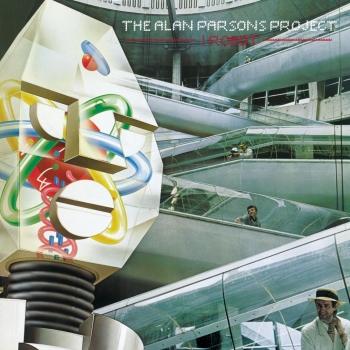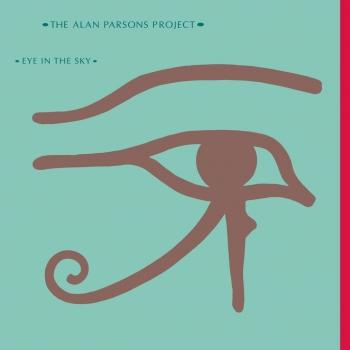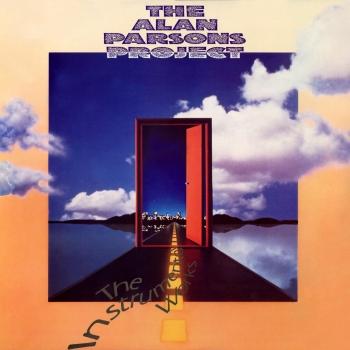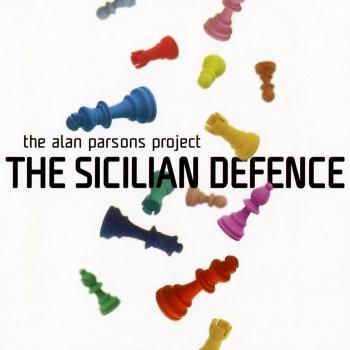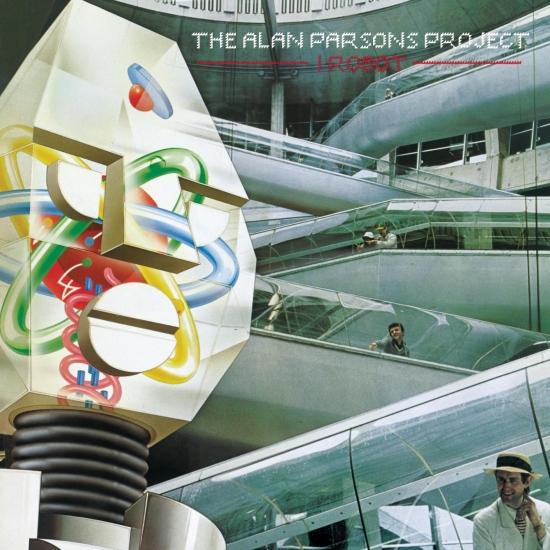
I Robot (Remastered) The Alan Parsons Project
Album info
Album-Release:
1977
HRA-Release:
26.05.2017
Album including Album cover
I`m sorry!
Dear HIGHRESAUDIO Visitor,
due to territorial constraints and also different releases dates in each country you currently can`t purchase this album. We are updating our release dates twice a week. So, please feel free to check from time-to-time, if the album is available for your country.
We suggest, that you bookmark the album and use our Short List function.
Thank you for your understanding and patience.
Yours sincerely, HIGHRESAUDIO
- 1I Robot06:02
- 2I Wouldn't Want to Be Like You03:23
- 3Some Other Time04:06
- 4Breakdown03:50
- 5Don't Let It Show04:26
- 6The Voice05:25
- 7Nucleus03:31
- 8Day After Day (The Show Must Go On)03:49
- 9Total Eclipse03:09
- 10Genesis Ch.1. V.3203:31
Info for I Robot (Remastered)
Perfectionism, Innovation, Complexities, and Reference-Grade Production Make Alan Parsons Project's Conceptual I Robot a Timeless Classic: Sci-Fi Arrangements Steeped In Drama and Moodiness
Mastered from the original master tapes, I Robot comes to life like never before on this numbered limited-edition reissue. Boasting immaculate highs and lows, generous spaciousness, and see-through transparency that takes you into the studio with Parsons and creative partner Eric Woolfson at Abbey Road, this superlative edition has been lovingly restored with the intention of demonstrating the full-range capabilities of the world's best stereo systems. Put simply, there's more music, more information, more detail, more nuance, more everything.
Savor reference-grade soundstages, immersive smoothness, sought-after instrumental separation, three-dimensional imaging, and consummate tonal balances. Able to be played back at high volumes without compromise or fatigue, this album is a demonstration disc for the ages – the likes of which are no longer being made.
Inspired by and loosely based around the Isaac Asimov stories of the same name, I Robot delves into themes of artificial intelligence and technological dominance that make the record increasingly relevant in the 21st century. Lyrically, songs such as "The Voice" call into question human behavior – and their relationship to increasing robotic supremacy – in everyday life. Sonically, Parsons reflects the associated paranoia, dichotomy, and transformation via shifting sci-fi arrangements steeped in drama and moodiness.
I Robot's absorbing tunes also continue to fascinate due to their perfectionism and innovation. Borrowing from Pink Floyd's strategies, Parsons utilizes a looped sequence on the title track to create new downbeats. "Some Other Time" employs two different lead vocalists and yet gives the illusion only one is involved. Captivating strings, a piccolo trumpet, and bona fide pipe organ grace "Don't Let It Show." The origins of "Nucleus" stem from a unique analog keyboard concoction dubbed "the Projectron," devised by Parsons and electronic engineer Keith Johnson. Andrew Powell's orchestral and choral arrangements top it all off, with "Total Eclipse" arriving as an aptly frightening track that presages the climactic "Genesis Ch. 1 V. 32."
„Alan Parsons delivered a detailed blueprint for his Project on their 1975 debut, Tales of Mystery and Imagination, but it was on its 1977 follow-up, I Robot, that the outfit reached its true potential. Borrowing not just its title but concept from Isaac Asimov's classic sci-fi Robot trilogy, this album explores many of the philosophies regarding artificial intelligence -- will it overtake man, what does it mean to be man, what responsibilities do mechanical beings have to their creators, and so on and so forth -- with enough knotty intelligence to make it a seminal text of late-'70s geeks, and while it is also true that appreciating I Robot does require a love of either sci-fi or art rock, it is also true that sci-fi art rock never came any better than this. Compare it to Jeff Wayne's War of the Worlds, released just a year after this and demonstrating some clear influence from Parsons: that flirts voraciously with camp, but this, for all of its pomp and circumstance, for all of its overblown arrangements, this is music that's played deadly serious. Even when the vocal choirs pile up at the end of "Breakdown" or when the Project delves into some tight, glossy white funk on "The Voice," complete with punctuations from robotic voices and whining slide guitars, there isn't much sense of fun, but there is a sense of mystery and a sense of drama that can be very absorbing if you're prepared to give yourself over to it. The most fascinating thing about the album is that the music is restless, shifting from mood to mood within the course of a song, but unlike some art pop there is attention paid to hooks -- most notably, of course, on the hit "I Wouldn't Want to Be Like You," a tense, paranoid neo-disco rocker that was the APP's breakthrough. It's also the closest thing to a concise pop song here -- other tunes have plenty of hooks, but they change their tempo and feel quickly, which is what makes this an art rock album instead of a pop album. And while that may not snare in listeners who love the hit (they should turn to Eye in the Sky instead, the Project's one true pop album), that sense of melody when married to the artistic restlessness and geeky sensibility makes for a unique, compelling album and the one record that truly captures mind and spirit of the Alan Parsons Project.“ (Stephen Thomas Erlewine, AMG)
Alan Parsons, vocals, guitar, vocoder
David Paton, vocals, guitar, bass
Ian Bairnson, vocals, guitar
Eric Woolfson, vocals, keyboards
Stuart Tosh, vocals, drums, percussion
Allan Clarke, vocals
Steve Harley, vocals
Jack Harris, vocals
Jaki Whitren, vocals
Dave Townsend, vocals
Lenny Zakatek, vocals
B.J. Cole, steel guitar
Duncan McKay, keyboards
John Leach, cimbalom, kantele
Hilary Wetern, background vocals
Smokey Parsons, background vocals
Tony Rivers, background vocals
John Perry, background vocals
Stuart Calver, background vocals
The English Choral
The New Philharmonia Chorus
Recorded December 1976 – March 1977 at Abbey Road Studios, London, England
Produced by Alan Parsons
Digitally remastered
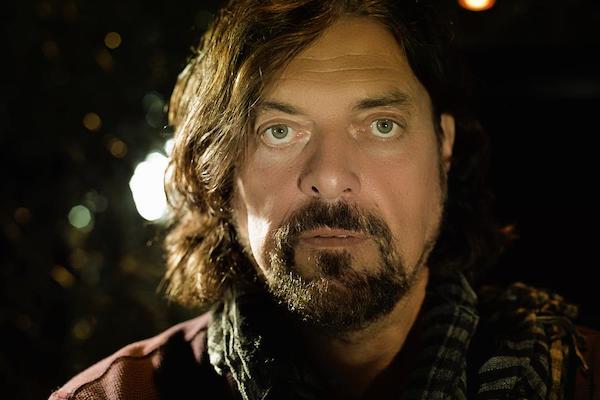
 The Alan Parsons Project
The Alan Parsons Project
During the Summer of 1974, Alan Parsons met Eric Woolfson in the canteen of Abbey Road Studios. Alan had recently engineered Pink Floyd's Dark Side Of The Moon and had already produced a number of acts for EMI Records. On that day, Eric had been working as a session pianist but was also a songwriter and had already composed material for a concept album idea based on the work of Edgar Allan Poe.
Alan asked Eric to become his manager and Eric managed Alan's career as a producer/ engineer through a string of successes including Pilot, Steve Harley, Cockney Rebel, John Miles, Al Stewart, Ambrosia and The Hollies. Alan commented at the time that he felt frustrated in having to accommodate the views of some of the artists which he felt interfered with his production. Eric came up with the idea of making an album based on developments in the film business, where directors such as Alfred Hitchcock and Stanley Kubrick were the focal point of the film's promotion, rather than individual film stars. If the film business was becoming a director's medium, Eric felt the music business might well become a producer's medium.
Recalling his earlier Edgar Allan Poe material, Eric saw a way to combine their respective talents:
Alan - engineer/ producer. Eric - songwriter/ lyricist/ musician. The Alan Parsons Project was born.
Eric put a proposal to 20th Century Records on these lines calling it 'The Alan Parsons Project' and the record company immediately went for the idea and decided that the proposal looked like a good group name. After the success of Tales of Mystery and Imagination, they were signed by Clive Davis to create a further nine Alan Parsons Project albums for Arista Records.
The APP was not a band in the traditional sense, it was the collaboration of two people - Alan Parsons and Eric Woolfson. They didn't tour or perform live to promote their work as Alan Parsons was the focal marketing vehicle as engineer/ producer, but not the artist, and the studio was therefore where he could reign in his role, not the concert stage.
Although the initial idea was that Alan would also contribute 50% of the music, in reality and with the time pressures involved, apart from a small number of instrumentals, he focused on the engineering, production and creative technical advance of each album, leaving Eric to write over 95% of the music and all of the lyrics as well as handling the business affairs.
Although there was no set 'group' of performers, guest artists (musicians and vocalists) were invited to participate in Project recordings. This often gave them an opportunity to display their talent without the normal pressures attached to their own recordings which could be counter-productive with their careers depending on their latest release. The artists who performed on Project albums, appreciated the freedom this gave them and enjoyed the experience. Alan often used artists with whom he had previously worked, Ian Bairnson and David Paton from 'Pilot' being two of the most regularly used musicians.
On all of the albums Eric would sing the demo lead vocal tracks which would then be recorded by other selected artists who often had very similarly styled voices to Eric's. Eventually on 'Turn of a Friendly Card' due to an impending deadline and as a last resort, Eric convinced a reluctant Alan to let him sing lead vocal on 'Time'. (Alan Parsons) 'I kept pushing him aside. I didn't think it was right that he should sing for the Project, but I was talked out of it. There he was, singing all the big hits from that point on. So I was clearly wrong'.
The Alan Parsons Project is one of the recording industry's most dynamic duos. Eric often described Alan as the foremost engineer/ producer of his day and together, he and Alan achieved over 50 million album sales, 9 Grammy Nominations, over 50 Gold and Platinum Disc awards, Top 10 hits worldwide and radio broadcasts of 2 million plus airplays in the US alone. With the new re-mastering of all ten APP albums and a wealth of bonus material exhumed from the archives, there is now a whole new perspective to their work together for people to enjoy 20 - 30 years on from when the albums were originally released.
Eric Woolfson went on to write a number of highly acclaimed and successful musicals. He died in December 2009 after a 12 year battle with cancer. Alan Parsons now performs with a band of musicians and plays largely Alan Parsons Project material.
This album contains no booklet.











